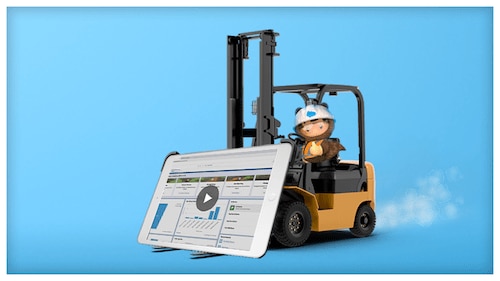B2B ecommerce growth is accelerating as buyers adopt new digital behaviors. Prior to the COVID-19 health crisis, nearly half (48%) of B2B businesses sold products online. And 88% expected to sell online exclusively in the next five years.
When stay-at-home orders left businesses unable to conduct face-to-face meetings and in-person store visits, B2B ecommerce helped buyers keep essential products on store shelves. Coming out of the crisis, ecommerce will become the new normal for B2B relationships. In fact, by 2023, B2B ecommerce will hit $2 trillion.
Capturing this opportunity is easier — and faster — than you may think. Getting up and running with a B2B ecommerce platform doesn’t have to take months or years. These are steps you can take now to prepare for what’s next in B2B commerce.
1. Think of your buyers as consumers not businesses
It’s no secret that B2B buyers want the same seamless online experiences they have as consumers with their favorite brands. Today, an easy-to-navigate website is table stakes. Now consumers and business buyers alike want self-service options. That includes on your B2B ecommerce platform. This is the most powerful differentiator for transforming commerce online. Plus, it’s a huge benefit for buyers.
A growing number of B2B organizations (73%) report that their customers have access to self-service options. Customers enjoy perks like faster customer service through chat and access to order history.
These capabilities put the customer in control. The result: faster processes, happier customers and, ultimately, growth.
To get started, begin with low-risk efforts like self-service ordering. From there, build on more features, such as customer service chatbots.
2. Go beyond basic fulfillment
In 2019, our research found that only 27% of B2B decision-makers have taken revenue-maximizing steps in the digital age.
Digital is the future of B2B commerce. To get started, look for ways to augment your sales channels with digital touchpoints. Set up systems that you can easily and quickly adjust, such as rapid reordering and self-service, to keep pace with customer needs.
Flexible systems allow you to deliver more value to customers. Look beyond basic fulfillment. Embrace automated processes for routine tasks, guided selling, and flexible shipping. Use digital channels to gather insights and expand into new markets.
But first, assess your capabilities to understand if your company is ready. For example, do you already have a fulfillment solution to extend ecommerce to new locations? Learn more about B2B ecommerce functionality and benefits with this Trailhead learning path.
3. Deliver omni-channel experiences
B2B relationships are unique in that buyers need to purchase both online and offline. How? By merging channels, customer data, and service activity for a 360-degree experience.
A Forrester report found that about one-third of B2B firms were executing or optimizing their omni-channel strategies. These organizations must strike while the iron is hot — and adopt a strategy where touchpoints respond based on interactions across channels.
But that’s not enough. The most effective omni-channel strategies require a shift in staff, technology, processes, and culture to support B2B buyers whenever and wherever. To make it happen, take a phased approach for testing and optimization (focus on one location or a specific business unit, for example). There are special considerations as well, especially during an unpredictable event like a pandemic. Before getting started, make sure you understand the targeted region’s regulatory considerations — and ensure that your product line has no supply chain issues. Which brings us to…
4. Trust your ecommerce leaders
Today, only 6% of B2B companies say their president owns the ecommerce program, down from 17% just two years ago. This is great news because it signals that internal experts are now driving program strategy, execution, and growth.
B2B needs are complicated, often involving large budgets and decision-making at the highest levels. Leading B2B businesses realize their organization’s structure must reflect the role of digital.
Given the broad adoption of ecommerce, those in B2B must examine how to improve the customer experience. As the industry undergoes this shift, it’s time to invest in B2B ecommerce capabilities to grab a bigger slice of that $2 trillion pie. It’s simpler and faster than you may think.
Looking to launch B2B ecommerce quickly? Learn more about Salesforce Quick Start Solutions.




























